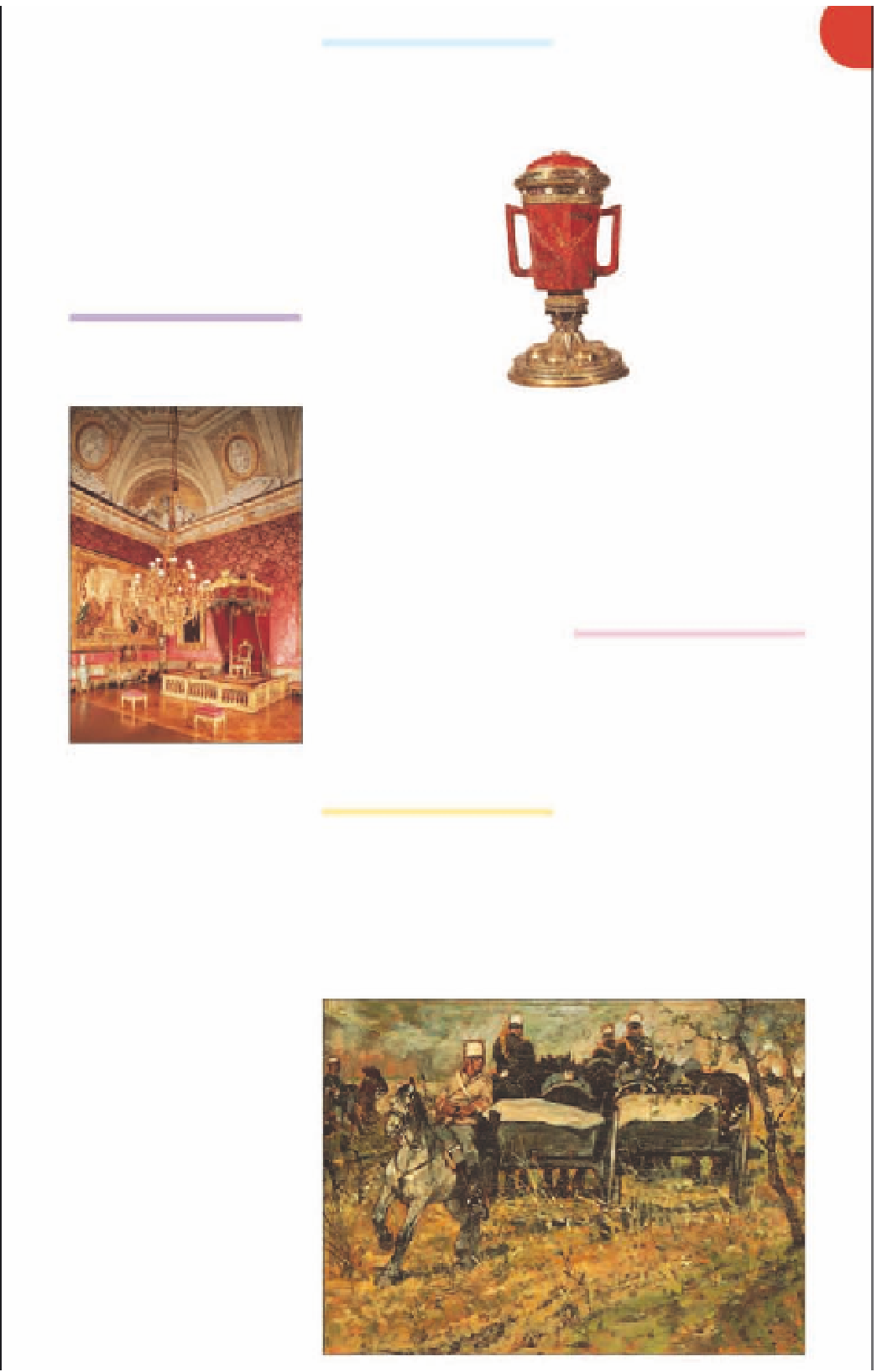Travel Reference
In-Depth Information
Madonna of the Chair
(c.1510)
in the
tondo
(roundel) form
which became very popular
during the Renaissance.
The Consequences of War
by Peter Paul Rubens (1638)
is an allegorical painting of the
Thirty Years War (1618-48),
showing Venus preventing
Mars from unleashing his fury
on the cowering, beleaguered
figure of Europe, completely
robed in black mourning.
The present museum has
combined this collection with
pictures donated by the state
and various private collectors.
The museum contains Neo-
Classical, Romantic and
religious works, but
probably the most
important collection
is of the group of
late 19th-century
artists known as the
Macchiaioli
(spot-
makers), similar to
French Impressionists.
The
Macchiaioli
used
bright splashes of
colour to represent
the sun-dappled
Tuscan landscape.
This collection was
given to the city of Florence
in 1897 by the art critic Diego
Martelli, and includes
paintings by Giovanni Fattori
(see p121)
and Giovanni
Boldini. Two works by
Camille Pissarro hang in the
same room.
MUSEO DEGLI ARGENTI
This museum is on the
ground and mezzanine floors,
below the Palatine
Gallery, in the rooms
used by the Medici as
their summer
apartments. It dis-
plays the massive
private wealth of the
Medici dynasty: the
collection encompasses
rare and beautiful
examples of ancient
Roman glassware,
ivory, carpets,
crystal and amber
and fine works by
Florentine and
German goldsmiths. The
pride of the collection are 16
pietre dure
vases displayed in
the Sala Buia. These belonged
to Lorenzo the Magnificent
and are from the ancient
Roman and Byzantine periods.
The family's lavish tastes are
reflected in the museum's
polished ebony furniture
inlaid with semi-precious
marbles and stones. Portraits
of the Medici hang through-
out the rooms, including a
series of the Grand Duchesses,
and Cosimo I and his family
carved in an onyx cameo.
ROYAL
APARTMENTS
14th-century gold
and jasper vase
GALLERIA DEL COSTUME
Opened in 1983, the gallery
is on the ground floor of the
Palazzo Meridiana. This was
designed in 1776 by Gaspare
Maria Paoletti for the Royal
Family; they lived until the
abolition of the monarchy
(see p52)
. The exhibits reflect
the changing tastes in the
courtly fashion of the late 18th
century up to the 1920s. Some
rooms have been restored to
correspond to a 1911 invento-
ry, while the rest of the
gallery has been renovated.
The Throne Room
The Royal Apartments on the
first floor of the south wing
of the palazzo were built in
the 17th century. They are
decorated with frescoes by
various Florentine artists and a
series of portraits of the Medici
by the Flemish painter Justus
Sustermans, who worked at
the court between 1619-81. In
the late 18th and early 19th
centuries, the apartments
were completely revamped
in Neo-Classical style by the
Dukes of Lorraine when they
succeeded the Medici dynasty
as the rulers of Florence
(see pp54-5).
The apartments are lavishly
appointed with ornate gold
and white stuccowork ceilings
and rich decoration, as on the
walls of the Parrot Room,
which are covered with an
opulent crimson fabric
detailed with a bird design.
The apartments' varied
ownership is revealed in
their design, which embraces
three distinct artistic periods.
GALLERIA D'ARTE
MODERNA
Here the paintings span the
period from 1784 to 1924;
many of them were collected
by the Dukes of Lorraine to
decorate the Palazzo Pitti.
The Italian Camp after the Battle of Magenta
(c.1855) by Giovanni Fattori






































